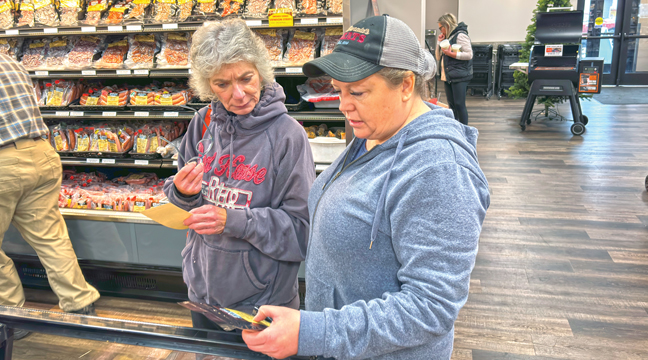The 2015 robotics season at Becker High School started with the now-traditional pancake breakfast at the school last Saturday morning, but this year the number of attendees was significantly higher. Students and coaches from robotics programs at Monticello, Buffalo, Elk River and other area schools were on hand to meet with current and past members of the Becker team (the Coalition of Independent Students, #4607) to gain some insights into the amazingly successful record the team has compiled in only two years of competition.
And some Becker graduates now in college built a working robot to 2015 specifications in one 72-hour marathon session.
Current and former Becker team members also met with visiting teams to discuss all aspects of the program, including fund-raising, marketing and recruiting of other teams in tournament coalitions, as well as team safety and problem solving in the construction and maintenance areas.
The event included a viewing of the video from the FIRST Robotics® organization which spells out the details of the tasks the robots will have to perform in competition, informs teams of the regulations they will need to operate under to succeed and provides a computerized video enactment of what an actual competition might look like, complete with a reproduction of the court and the equipment involved.
The 2015 competition is titled “Recycle Rush,” and it involves robots being able to move, pick up and stack crates, barrels and other objects more efficiently than competing teams. The challenge is to create a machine that performs these tasks rapidly and accurately without breaking down, which seems less complex than the games of the previous two seasons.
In their first year of competition with the famous “Peanut” robot, the machine was required to build a robot that could climb to a certain height on a steel bar pyramid, and make or block Frisbee shots from opposing machines. Last year, the robot was required to include a catapult to launch large exercise balls long distances into a small target, as well as moving to block opponents on the court. Becker was part of the state-winning coalition team in 2013, and posted a second-place finish at state last year, an almost unheard of success rate for a two-year-old team.
While the student teams met in groups, Asst. Principal Mark Kolbinger and team mentor Russ Girtz met with parents to discuss the formation of a booster club for the robotics program, similar to those for other sports and extra-curricular activities at the school.
The Marathon
Now a freshman at North Dakota State University Ryan Swanson and a group of other Becker graduates from NDSU and other schools had another motive for attending the 2015 kick-off festivities. They were there to engage in a 72-hour marathon build session in which they would create a working model of a machine based on the requirements for the 2015 season. On hand for all or some of the build were Becker graduates Tyler Danielson, Cole Anderson, Zach Kerzman, Jake Bernier, Emily Knudsen, Brenten Schlangen and Alex Kolbinger, among others who slipped in and out during the three-day project.
The NDSU robot, called “The Greenhorn,” was up and running on Tuesday night when a team from the University of Minnesota showed up for a mock contest using 2015 rules that was held in the new Teaching and Learning Center at BHS. It was a definite contest of styles, with the NDSU entry using a bar-and-hooks approach, contrasting with the U of M device, called “Snow Problem,” which used long, slender arms to grip and stack the target crates.
Swanson said that he would like to see the marathon build be a part of the robotics season kick-off every year, and the project is currently under discussion with school administrators.
The Season
The 60 students currently signed on to the BHS robotics team will create their own robot for the coming year, with the official “build season” running from last Saturday through Tue., Feb. 17, when all work on the machine must cease and it is “bagged and tagged,” according to coach Alex Jurek, sealed in an official heavy plastic bag until it arrives at the tournament site in March. Mentor Roger Niday said that the new robot will not use the same design plans used to create the NDSU machine, as the BHS student build team has already decided on a different route to accomplish the 2015 tasks.
Mentors and coaches are, as ever, guardedly optimistic about the coming season, though Kolbinger did caution parents to be aware of the logistics problems in taking a 60-member team and supporters to a venue like the nationals at the Edward Jones Dome in St. Louis, as was the case in 2013.













